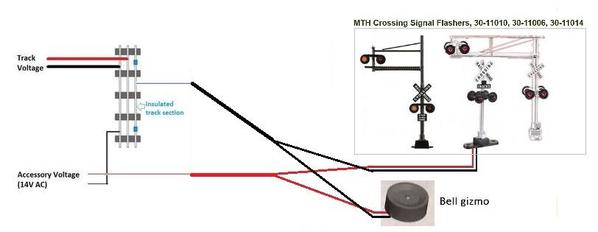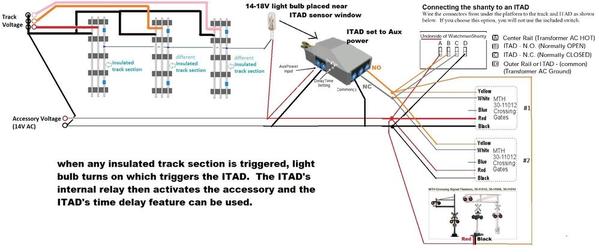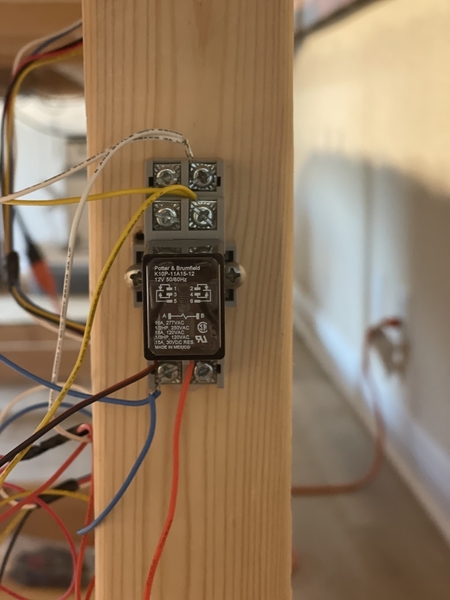stan2004 posted:wrawroacx posted:... you have the accessory voltage and see you connect one wire to the black wire from the 14 Volts to the 2C, is that correct and the red wire to the Crossing Lights? Also from both diagrams, why do you have to have 2 different options?
Correct. In this case, the black wire from Acc Voltage goes to 2C. Red wire from Acc Voltage goes to the Red wire of Crossing Lights (and to Red wire of Bell if used).
I show options because they are exactly that. The two methods will behave the same (i.e., are functionally equivalent) but sometimes one method can be simpler - for example requiring less wire length.
Well, not to confuse the issue but I hasten to point out that your question was "can this relay work for...". In the options category, yet another method for these accessories is to skip the relay all together.
So while the relay "can" work for those lights, you do not necessarily "need" that relay (or any relay). This is because these latter accessories are simple OFF or ON accessories with only 2 wires. The crossing gate is a more complex accessory which is ON and ON and hence needs the relay module to manage the extra wiring (5 wires).
What makes your head spin is there are reasons why you might want to use a relay module even if you don't need one. That starts to get into subtle differences in how different relay modules are designed and the dialog can become somewhat geeky with a helping of philosophy.
You need a relay module like Azatrax for the crossing gate. You can use the relay module for the simpler signals.
Stan, please email me at wrawroacx@windstream.net I have some more questions, but don't want to keep bumping up this post.












